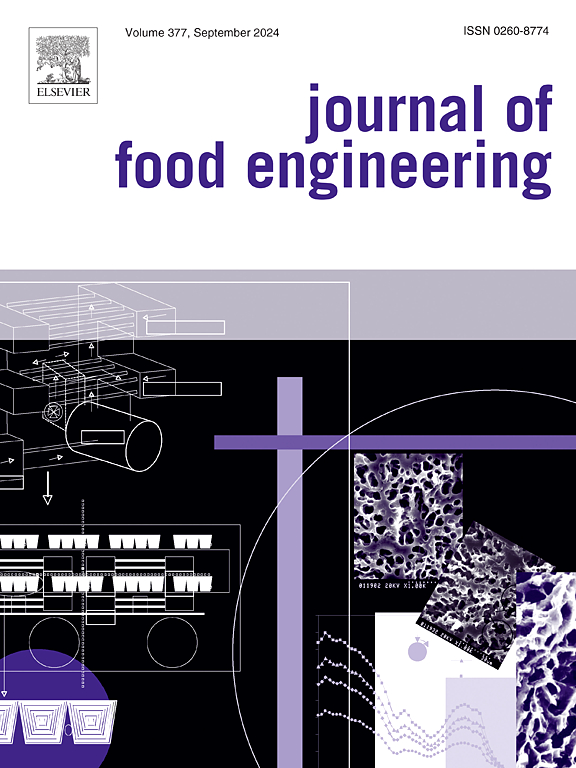Physical field pretreatments enhance drying efficiency and quality of goji berry
IF 5.8
2区 农林科学
Q1 ENGINEERING, CHEMICAL
引用次数: 0
Abstract
Physical field pretreatments offer promising solutions for enhancing drying efficiency and quality. This study evaluated four innovative physical pretreatments—freezing-thawing (FT), ultrasound (US), pulsed electric field (PEF), and dielectric barrier discharge (DBD) plasma—on goji berries, focusing on their effects on tissue microstructure, moisture transfer, energy consumption, and post-drying quality during hot air drying at 55 °C. FT, US, PEF and DBD pretreatment shortened the drying time by 15 %, 29 %, 20 % and 49 % respectively and reduced the energy consumption accordingly. Among these methods, DBD plasma pretreatment emerged as the best method in terms of comprehensive ability, offering the highest drying efficiency and post-drying quality. DBD produced the highest kinetic model coefficients. FT caused rapid shrinkage, which hindered moisture transfer during subsequent drying, leading to nutrient loss and surface browning. Both US and PEF showed moderate improvements, though less effective than DBD, with US posing a risk of nutrient loss. US, PEF, and DBD reduced browning, with PEF and DBD inhibiting browning enzymes. All pretreatments changed the microstructure within goji berries, promoted the transformation of vacuolar to interstitial water, and affected the drying efficiency. DBD treatment uniquely caused a reduction in bound water and a destruction of the surface structure bringing mass transfer benefits.
物理田间预处理提高了枸杞的干燥效率和品质
物理场预处理为提高干燥效率和质量提供了有前途的解决方案。本研究评估了四种创新的物理预处理方法——冻融(FT)、超声(US)、脉冲电场(PEF)和介质阻挡放电(DBD)等离子体对枸杞的影响,重点研究了它们对55°C热风干燥过程中组织微观结构、水分转移、能量消耗和干燥后质量的影响。FT、US、PEF和DBD预处理分别使干燥时间缩短15%、29%、20%和49%,能耗相应降低。其中,DBD等离子体预处理在综合能力方面表现最好,干燥效率和干燥后质量最高。DBD产生的动力学模型系数最高。FT引起快速收缩,阻碍了随后干燥过程中的水分转移,导致养分损失和表面褐变。US和PEF都显示出适度的改善,尽管不如DBD有效,但US有营养流失的风险。US、PEF和DBD减少褐变,PEF和DBD抑制褐变酶。所有预处理都改变了枸杞内部的微观结构,促进了液泡水向间隙水的转化,影响了枸杞的干燥效率。DBD处理独特地减少了结合水,破坏了表面结构,带来了传质的好处。
本文章由计算机程序翻译,如有差异,请以英文原文为准。
求助全文
约1分钟内获得全文
求助全文
来源期刊

Journal of Food Engineering
工程技术-工程:化工
CiteScore
11.80
自引率
5.50%
发文量
275
审稿时长
24 days
期刊介绍:
The journal publishes original research and review papers on any subject at the interface between food and engineering, particularly those of relevance to industry, including:
Engineering properties of foods, food physics and physical chemistry; processing, measurement, control, packaging, storage and distribution; engineering aspects of the design and production of novel foods and of food service and catering; design and operation of food processes, plant and equipment; economics of food engineering, including the economics of alternative processes.
Accounts of food engineering achievements are of particular value.
 求助内容:
求助内容: 应助结果提醒方式:
应助结果提醒方式:


